Independent Collectors
Friedrich & Johanna Gräfling
The young collectors with collaboration at the heart of their collection.

We speak to the young collecting couple who have dedicated themselves and their collection to collaboration and supporting the artistic practice
With a collection of over 400 works by some of today’s most exciting contemporary artists, as well as having numerous spaces to encourage public engagement with art, Friderich & Johnna Gräfling are not your average collectors.
The Frankfurt-based collectors are dedicated to collaborating with the artists in their collection and in 2011 converted a former slaughterhouse in Friedrich’s hometown of Aschaffenburg into a 600-square-meter venue which features one new exhibition annually, as well as initiating the independent exhibition space, Salon Kennedy, in a prestigious historic apartment in Frankfurt.
We sat down with the two young collectors to talk about the foundations of their collection, why collaboration is vital, and the importance of sharing works with others.
Friedrich, I once read that at the very beginnings of your collecting journey you had to make the decision between either buying a Playstation and buying your first piece of art. Is this true?
FRIEDRICH GRÄFLING: It wasn’t quite as literal as having a gallery next-door to a Media Markt. I never had any other big expenses during my studies or childhood; it was just that I’d rather spend that money on a little piece of art by a young artist or on an edition than a Playstation, that I knew I’d enjoy only for a brief moment in time.
Do you find that you still need to make these types decisions now when acquiring works for your collection?
F: Of course – it is still always a choice you make. We constantly ponder between what most people might call “necessities”/ “commodities” and art. Hence, instead of spending money on a vacation, a new sofa or even a car – we usually decide to invest it in another piece of art.
Let’s talk about how you first got interested in art and how you decided to start collecting so seriously at such a young age?
F: Colleting is in the genes of someone – either you’re a collector or you’re not. I think you are a “true collector” by nature, someone who does not purely collect one thing such as art, but rather they collect everything. It’s an obsession. It’s not about buying this one object but rather owning or having the collection of something.
I would say that I have always been a collector, but just with a different mindset: even when I was five years old and started to keep and preserve things – just back then it was stones and pebbles that you stumble upon on your way to kindergarten! You collect something, you keep it, you think about it and you start to build up your own relationship to the object and the whole.
My interest in collecting specifically art started through my interest in graffiti. There was a graffiti “crew” of about ten people in my hometown. At some point I got to know them and we started hanging out. It was a very specific time in my life that I wanted to manifest. For me, it was a natural decision to do this by keeping/acquiring some of their works.
These where the first works of art I ever bought and somehow laid the foundation for the entire collection. I still have all of them. From that point on, my interest in street art developed much further, and yet it was only until I moved to London for my studies that my interest in contemporary art was sparked – mainly through my tutors at the Architectural Association.
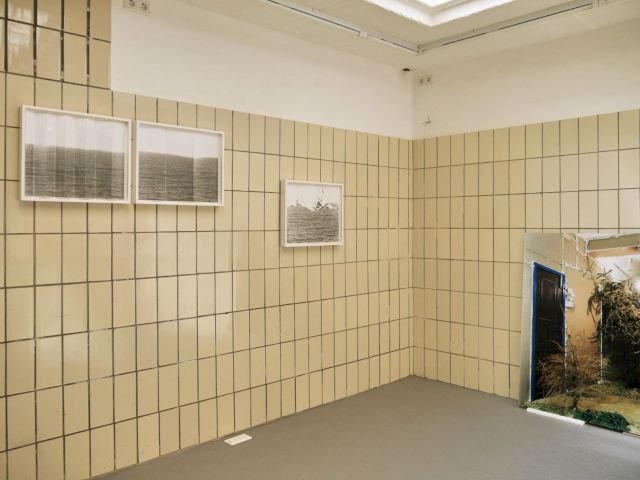
I’m interested in what you said about being “born a collector” or not. What characteristics do you think one needs to have this trait?
F: I think it’s a disease, an addiction. A “true collector” does not buy to hang on the wall but rather for an internal cause, an internal desire rather than a social one.
Let’s talk about the slaughterhouse that you converted into a space to exhibit works of contemporary art with annual exhibitions in your hometown of Aschaffenburg. How did it come about?
F: The slaughterhouse started when Johanna and I had already met. We were both still studying in 2010, with the first exhibition-taking place in 2011. The idea actually evolved out of the early “concept” or rather necessity of the collection: We weren´t able to afford especially larger works we admired, yet didn’t just want to buy editions or multiples so we had to find ways around the monetary exchange. Thus, we started to approach the artists to see if they were interested in collaborating in some way, swapping etc. For instance, I worked one painting off in the artists studio by priming canvases or stamping invitation cards. For others we started to organize exhibitions.
After we found the space, which sort of just fell into our laps, we renovated it and started a conversation with the artist Gregor Hildebrandt about creating the first exhibition. Our interest was again to have a collaborative process, a personal exchange of thoughts and ideas between Gregor and the two of us. We decided on him showing parts of our collection and in return we offered him a space that was completely free of the limitations that exhibitions in galleries or institutions so commonly face. This resulted in Gregor experimenting in a new wall technique and framing other works that he later incorporated into many different shows.
This is something that we are absolutely interested in –being able to allow experimentation through collaboration.
J: We realized that we offered not only an exhibition platform but rather a testing ground that had a long-term impact on the way Gregor produces artworks and approaches exhibitions. For us it was especially exciting to see that we somehow planted something that developed beyond the limitations of the space and timeframe of the exhibition.
Was it ever important for you to live with these artworks, or was it more of a space where you could present art?
F: We’ve never lived in the space of the slaughterhouse, that was never the plan. The idea initially was to create a space for us to hang or exhibit more art then we were able to in our home That changed very quickly as it turned into collaborative project space, where we were both working with the collection but also always inviting artists to come and react and use it as a space for production.
We never just wanted to showcase the collection but rather use it as a medium to create experimentation.
J: The projects at the slaughter house laid out the foundation for Salon Kennedy, which is where we live now. I think we needed this experience and sort of experiments to open the next, more permanent space.
I guess for us, collecting art is really not just about hanging something on the wall but to immerse in it as a whole.
JOHANNA GRÄFLING
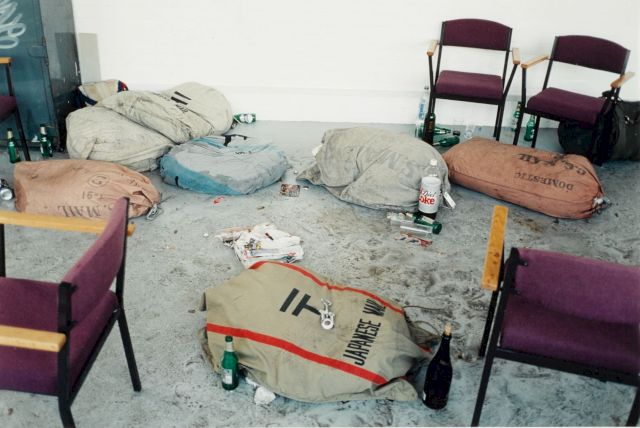
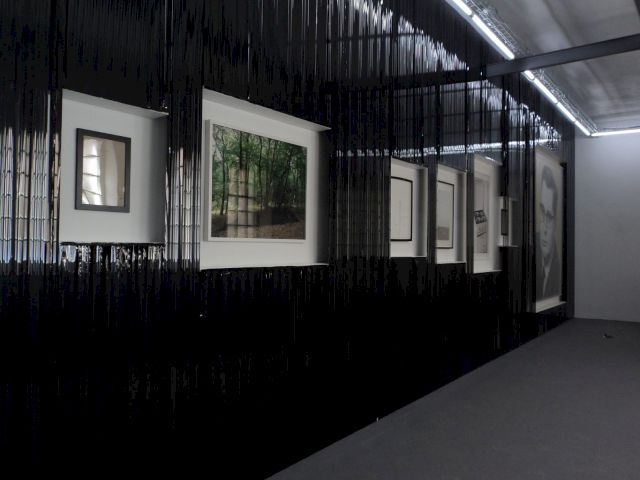
What did you want to achieve with Salon Kennedy? Was the main goal there to make privately owned publicly accessible?
F: Yes and no. I think it was always about making art accessible, but not privately owned works. It was more important for us to be involved in the production process as well.
J: Exactly. It’s not only interesting for us to just own artworks from the artist we exhibit but instead we really ask the artists to produce an exhibition in the space. We really believe in this idea and concept of the Salon. We thus invite artists as well as bringing people together through dinners and other events. Thereby by we find a common ground within the realm of art and make it accessible.
F: It’s also about sharing a passion. We’ve been collecting now for over ten years and we are only just turning thirty. We obviously started really young and maybe it’s not a typical way to buy art, but this is why we started the Salon: to invite people our own age who haven’t had that many encounters with art so far and for whom we triggered an excitement about the subject.
J: Furthermore, it is at the same time important to accompany the artists further and support their careers beyond the single exhibition at our space. As we are not a gallery, we usually only do one show with the artist at the Salon. Yet, we use common networks within the art world to give the artists further opportunities to showcase their work. One exhibition with the Danish artist Benedikte Bjerre took on different forms and layers in London, Italian Alps, Cologne and New York for instance.
Another aspect that still remained from the experience of the slaughterhouse and the idea to offer a platform to artists, is supporting their entire production process: For Michael Sailstorfer´s work Tränen, we offered the house that he later destroyed, organized the logistics etc. Again, what started off as one new work (Tränen, 2015) three years ago, has now developed even further into an entire body of work.

What is it like to live with the artworks?
F: Well it never gets boring! Whether you’re on the sofa, in the kitchen, or in the shower, it doesn’t matter – you’re constantly surrounded by objects or elements that trigger something in you, be that visually or emotionally. There is always a relationship to the works.
J: We never randomly purchase a piece – there’s always a certain memory or history behind it whether that’s a trip or an encounter with the artist or a connection to the space where we first saw it in. Being surrounded by these works constantly brings you back to these specific, and personal, memories.
Has there ever been an artwork in your home that you found challenging to live with?
J: Of course! There is always a downside and you always need to be careful. We have difficult works in terms of maintenance but also challenging looking at and experiencing. There are also always more difficult works due to size or medium.
For example we had one sculpture by Tomas Saraceno installed at our place, which was demanding but not necessarily challenging. Only when a friend slept in the room at some point he woke up every hour, as the balloon re-pumped itself.
F: We have found that you also treat artworks differently depending what room they are in; for example, put in the bathroom compared to the bedroom.
On the other hand, when talking about living with art there is also the other element that at some point size and fragility become such an issue that you cannot buy new works anymore; we have many works that are really hard to store but we could never actually live with because we would need to build a specific space for them. It’s definitely a challenge.
Do the pieces in storage always stay in storage or are you happy for them to tour to exhibitions?
J: Some of them are stored away and some of them are lucky enough to get to travel around the world to museums and institutions – especially the rather “difficult” works as institutions have the capacity to pick them up.
Your personal relationship to the artists is something that is vital not only to the collection but also to the both of you on a personal level. Why?
F: I think that it’s all about giving a certain trust to these artists. Of course it would be easier for us to just go to a fair, pick a work and then buy it. I think for the artists too this idea of the unknown is quite challenging.
For sure you don’t know what is going to come out of a project but that is part of the appeal. There are artists whose work we follow quite closely and also collect in depth, It’s incredibly important for Johanna and me to also be a part of the development of the artist, their works, the discussions around it and its process.
J: This is really something that has become a crucial characteristic of the way we collect as well. Combining our passion for art and the interest in collaborating with artists, we somehow naturally try to manifest important aspects of our lives through artworks. This has developed into quite active involvements with some of the artists that we have known for years. Friedrich asked Alicja to do my engagement ring and we even got Tattoos by Malte Zenses to preserve this special moment in our lives (which we of course see as a work itself).
For one event we hosted our guests inside a room installation by Yves Scherer, Michael Sailstorfer equipped the dancefloor and Christian Jankowski produced a video work. All these works obviously became very personally and entered the collection one way or the other. I guess for us, collecting art is really not just about hanging something on the wall but to immerse in it as a whole.
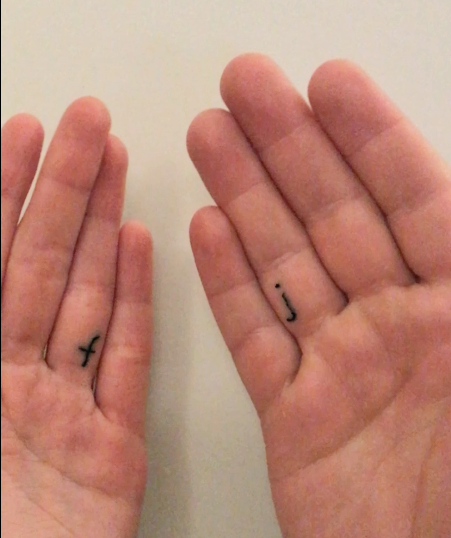
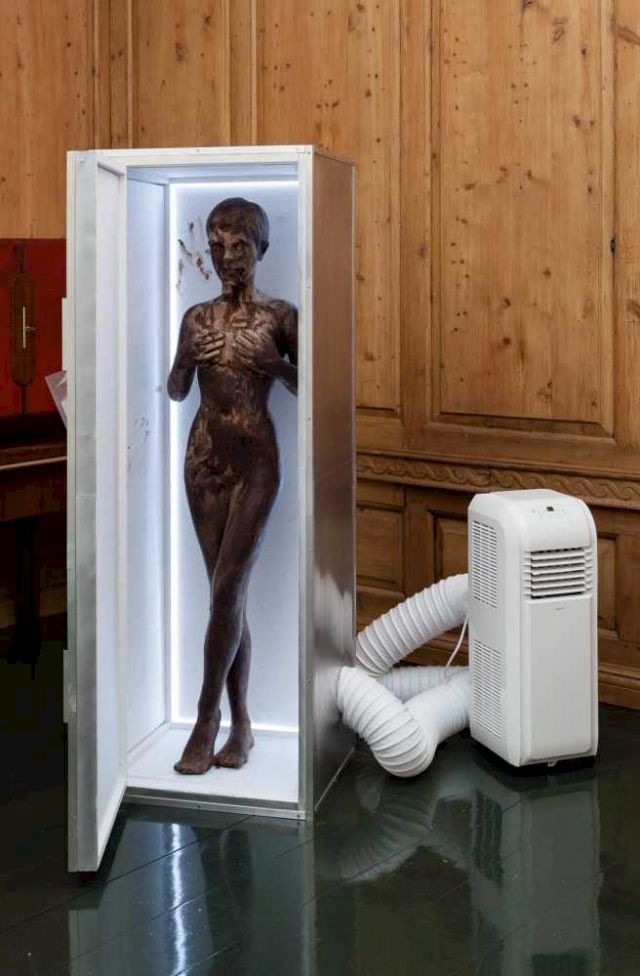
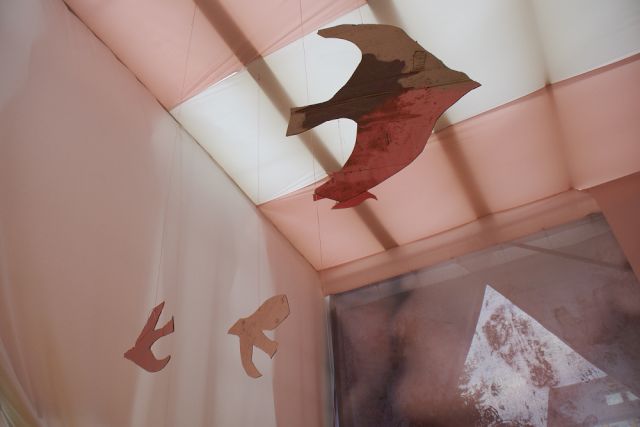
Is there a theme running throughout your collection that you are aware of?
J: I don’t think there is a theme specifically, it rather reflects a certain period in our lives and thereby changes naturally throughout the years. Naturally, we are interested with a current Zeitgeist and as a result collect artist from our generation.
F: This is probably something that external people can perhaps depict. For sure there is always a theme because there’s always a certain mindset that the collector has and the taste they have, but we don’t have a theme where we say, “we only buy photography and video” for example. From the inside, we would say that there is no thread running throughout the collection. It would be an interesting experiment one day to have an external analysis made of our taste.
And I would imagine that collecting artists from your generation means that it is often easier to form these connections and personal relationships with?
F: A connection is one thing but it also links back to what I mentioned earlier about it being an unconscious documentation of a specific time in your life, as well as it being a nice way to follow and grow with an artist over an extended period of time. Additionally the majority of the artists in the collection reflect our stance to our style of living and life in general; for example we don’t yet have any African or Asian artists featured. This doesn’t mean that we do not have any interest in these artists, but we just have not yet had any direct contact to them.
As a couple, how do the two of you collect together?
F: If Johanna wasn’t here I would be bankrupt!
J: More or less we share the same taste but in the end it needs to be a “yes” from both sides and both of us are very good at convincing the other! This also sometimes means really investigating, especially if the other is not as keen in the beginning. It can therefore however, take up quite some time until we make our final decision.
F: For example the New York based painter Grace Weaver – Johanna found her several years ago, but it took until two years ago for Johanna to convince me that we need her in the collection.
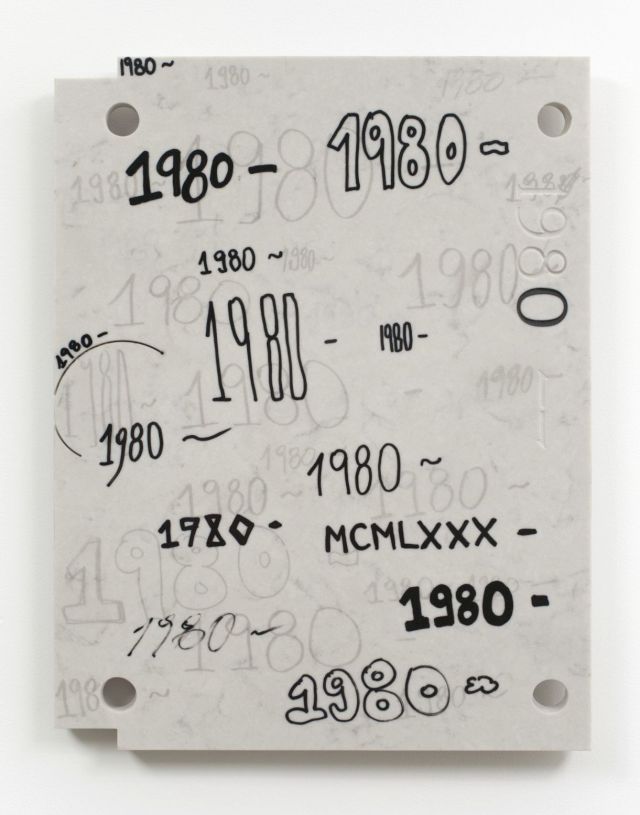
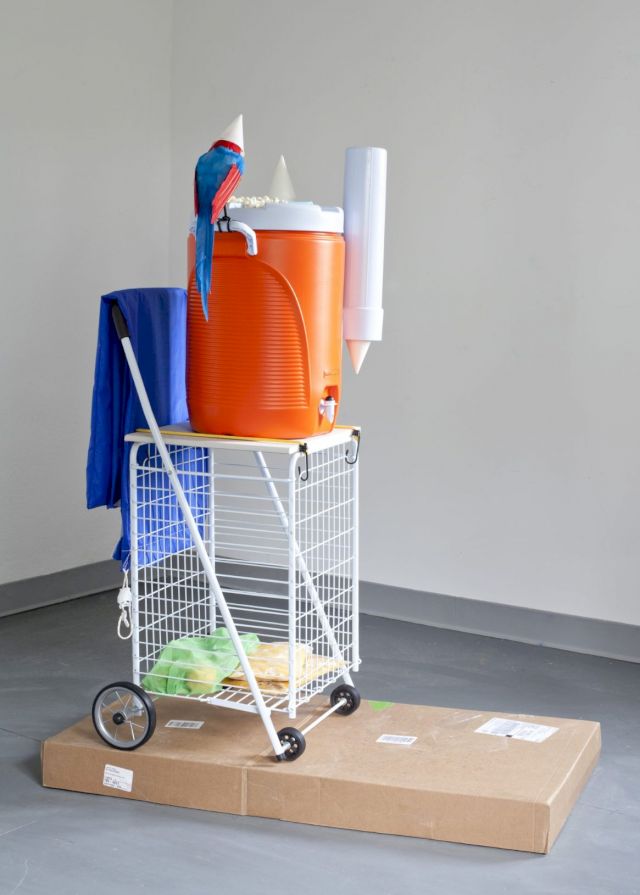
Travel is also something that is very important to the both of you, with you very frequently travelling around the world for exhibitions, fairs, or art events.
J: Absolutely. It’s often a big trigger as to why we travel to places.
F: Especially to the hidden or to more unknown places.. It is not always necessary to travel to the major cities – sometimes the more exciting discoveries can be found in a small village in the countryside.
As young collectors, how has being so active in the collecting scene impacted your collection? Would you say it’s had any benefits to be so young?
J: It’s hard to say right now but I’m sure it is something we will see in the future.
F: I don’t think the age has any impact at all. Through the art we make friends that are our parents age and we met people that are much younger. I think it’s irrelevant. What is relevant however is how one sees things and each stage in your life has its own relevance.
Over the last couple of years we have seen a change in how collectors present themselves and their collections, with more and more being open to show what they have on various social media platforms. We’ve also noticed that collectors are becoming celebrities, sometimes even more famous than the artists that they collect. What do you think about this change?
F: Generally I would say that a collector’s aim is to acquire more, and I believe that it would be more interesting if there would be no market or no career advancement at all for collectors. One thing that has happened in recent years, and is maybe slowing down a bit now, is the explosion of prices – so if you want to follow an artist for a long time that proves to be quite challenging now. The market is moving faster than what the majority of collectors can react to.
J: If the collectors become as famous as the artwork or artist they then become a part of the system that triggers this rise in prices. On one hand it’s great that collectors are opening their collections to the public, which of course is positive, but it also contains negatives particularly when looking at the state of publicly funded institutions right now. Also, this social media madness is triggering the fame of collectors and the lifestyle that comes with it which can look intriguing to outsiders. I think we need to see how long this lasts.
It seems to have just happened very fast. It went from something that was a very personal, private, interest to now being a very public activity.
J: As you nowadays don’t really differentiate between what is private/intimate and public anymore, it only seems natural, that people want to show what they own. Collecting art is part of a lifestyle. Yet, at the same time it is something very personal and from a collectors’ perspective it gets a bit dull as it doesn’t really matter what you have in your collection or even if you have an interesting collection.
F: It makes it more difficult to differentiate between the true and passionate collectors because everyone just wants to show their “best bits”.

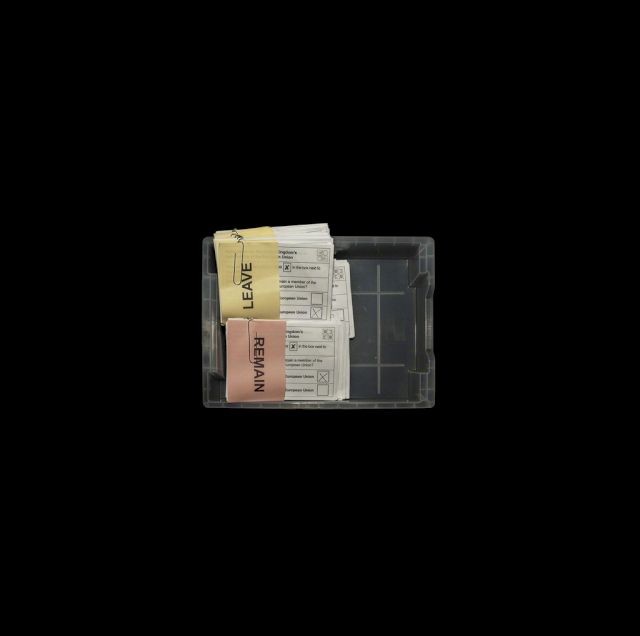
Do you use social platforms to help build your collection or use as a tool for research?
F: We are on social media but I wouldn’t say actively. For me, Instagram is no tool at all for the collection but rather a tool to kill time if you have to. It’s certainly no tool for research or inspiration. Instead we do this through galleries, artist studios, museums, art fairs, talking to other collectors, and through artists directly.
Which is in keeping with your enjoyment of collaborating with artists and working closely with them.
J: Considering this, it almost seems old- school, especially at our age, but it is exactly this contact that we really enjoy and need.
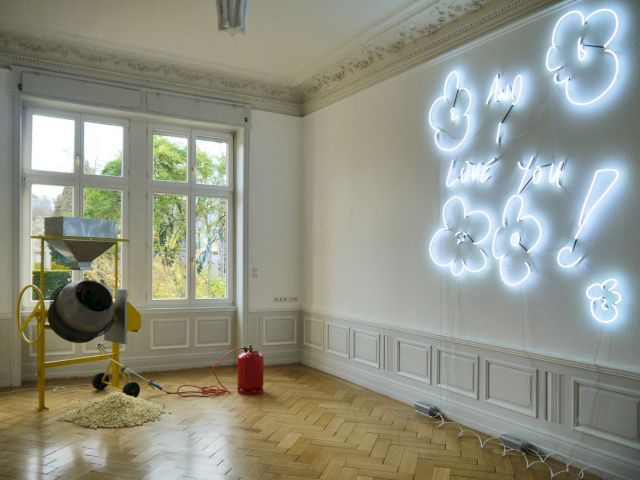

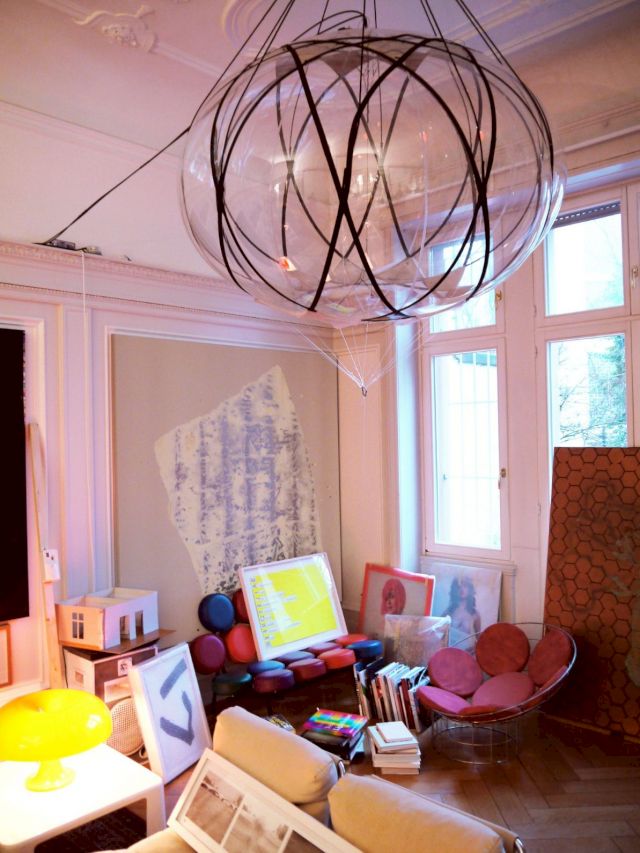
Sammlung Fiede is featured in the Art Guide.